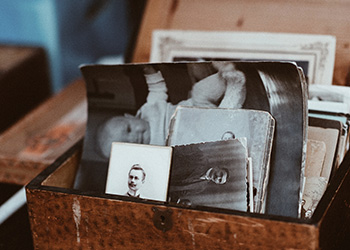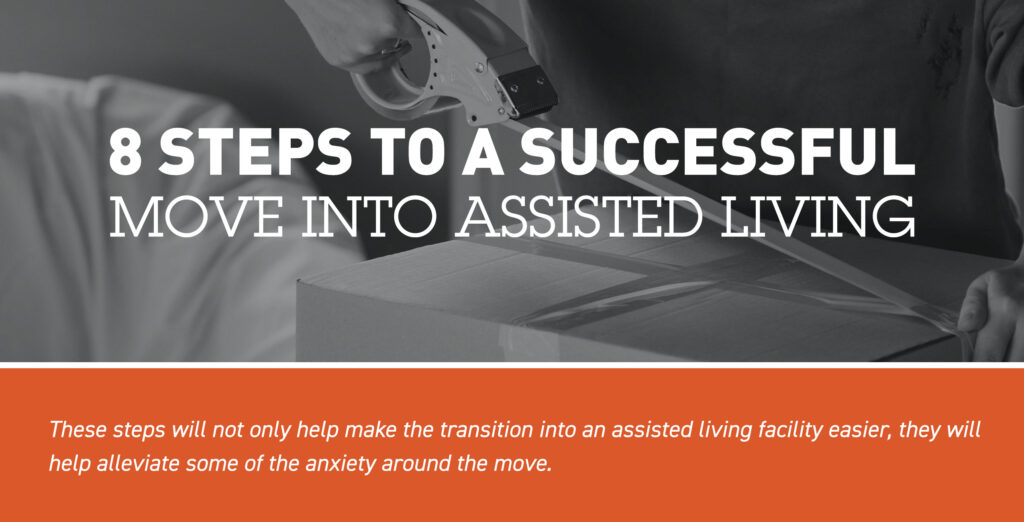Helping a senior loved one move into an assisted living facility provides a wonderful opportunity to show affection and support. The actions of caregivers and adult children of aging parents can help the senior embrace this new stage in life with openness and joy, rather than feel overwhelmed with anxiety.
One of the most common challenges seniors face before moving into assisted living is the task of downsizing. Not only is it important to have a plan to downsize efficiently, it’s important to understand that downsizing can be an emotionally loaded task.
Your senior loved one may feel overwhelmed by the idea of leaving their beloved home and moving into a new environment. Additionally, they may be emotionally attached to their possessions and not want to be without them.
Below, we offer tips about how to effectively support your loved one as you help them downsize.
How to manage the emotional side of downsizing with your senior loved one.
 Meeting the emotional needs of your loved one begins with starting a conversation and listening with empathy. Consider your conversation a collaboration, where you’re both participants. Keeping your senior loved one involved in each step and empowering them to make decisions helps them feel valued. When they bring up concerns, take time to listen carefully.
Meeting the emotional needs of your loved one begins with starting a conversation and listening with empathy. Consider your conversation a collaboration, where you’re both participants. Keeping your senior loved one involved in each step and empowering them to make decisions helps them feel valued. When they bring up concerns, take time to listen carefully.
The initial conversation may bring up very broad questions, such as:
- Who’s going to move my belongings?
- How much time do we have?
- Why can’t I put everything in storage?
It’s good to be prepared for discussing the big questions. Being able to be a part of the planning process will help empower your senior loved one. The answers will go a long way to assuaging anxieties and fears.
Start the conversation as early as possible. Six months to a year prior to a move is ideal. You’ll want as much time for the downsizing process as possible.
Take your time.
Keep in mind, the conversation with your loved one regarding downsizing will be ongoing. Questions may arise during any step of the process, and this is okay. In fact, the more questions, the more communication – and that’s a good thing!
We all have wonderful memories associated with our belongings, whether it’s a tea set received from a loved one or a blanket knitted by a dear friend. These belongings could also be associated with sad memories. It’s important to honor the emotions as they arise during the downsizing process.
It’s not uncommon for caregivers or adult children to have memories come to the forefront during this process as well. You too may experience mixed emotions. When any emotion surfaces, it’s the perfect time to talk about it.
Consider starting the downsizing process in an area of the home with items less likely to have sentimental value. A kitchen or living room may house all sorts of beloved possessions. Starting in a room without these types of items is a good way to begin in order to get acclimated to the process.
Be sure to take breaks for coffee, a walk, or just a relaxing moment in the backyard. Honor the process and each other.
How to help your senior parents and loved ones downsize and declutter.
The best way to support your senior when you start downsizing is to stay organized. You want to take the burden off their shoulders and staying organized helps you and can relieve some of their anxiety knowing you’ve got it all handled.
How do you prefer to stay organized? Maybe you use an app, or a spreadsheet, or simply make lists. Whatever works for you is the right choice for the downsizing process. You’ll want to keep track of things you need to purchase (boxes, tape, etc.), items that will be gifted to friends or family, prices of donated items for tax purposes, and more.
Declutter
It’s easier to start downsizing by removing items your senior loved one isn’t emotionally attached to. An easy decluttering experience can set the tone for the rest of the downsizing process.
When you declutter, you’ll want to go room-by-room and get rid of the easy stuff. For example:
- Bathroom: Expired medications, makeup, and other products.
- Bedroom: Empty tissue boxes on the nightstand, pens rattling around in drawers, or old magazines.
- Kitchen: Clean out those junk drawers that contain old coupons or takeout menus, used batteries, and other odds and ends.
Use two bins, boxes, or baskets for this process, one for trash and one for recycling.
Start Sorting
To help your senior loved one with downsizing, organize belongings into three categories:
-
- Items that can be stored. Anything that’s important to keep but won’t fit into the smaller space.
- Items that can be shared. Share heirlooms with family, so your senior knows their treasures will remain cherished for years to come.
- Items that are no longer wanted. Sell any unwanted items at a yard or estate sale, then donate unsold items to charity.
Tips on Donating
If your senior loved one wants to donate any of their belongings, it’s a great opportunity to make the process extra special. There are so many organizations they can choose from. Find out which resonates with your loved one.
For example, perhaps they’re a veteran and want to give back to other vets. Maybe they’re a big reader and want to donate books to relief shelters for victims of hurricanes, floods, or other natural disasters. There are also Furniture Bank Network that provide those in need with household items. Donating possessions to a place that speaks to the heart makes giving that much more rewarding.
Honoring Memories
Most of us have memories of the old, beat up, mostly broken armchair dad loved to sit in. It was his spot for reading and watching the game, grandkids would pile on his lap, and the family pet found a place there too. This is a great example of the type of item no one wants to get rid of. We all know it’s not the armchair we’d miss if it was donated; it’s all the memories attached to it that make us want to keep it.
There’s a way to honor all the memories! Find a photo of dad sitting in the chair with the kids, or even several photos. You can have these pictures beautifully framed and hang them on the wall in the new space. You can even purchase (or make) shadow boxes for the photos and include mementos like dad’s medals or coins from his collection.
Helping a loved one downsize is a wonderful opportunity to strengthen bonds, share memories, and provide love and support.
Marquis’ Assisted Living & Senior Health Care Services
For over 30 years, Marquis Companies has provided innovative, person-centered care for our residents. No matter where your loved one is on their aging journey, we will help develop a customized plan that includes opportunities for social interaction and engaging activities based on their unique wants and needs. Connect with us today to learn more.
